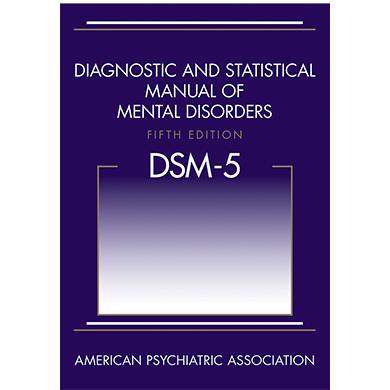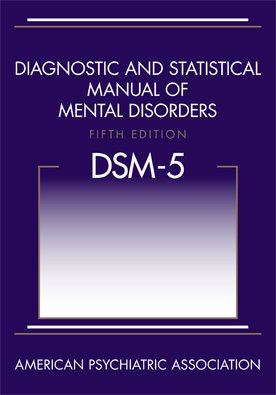DSM-5 has announced its price, an incredible $199 (and the paperback is also no bargain at a hefty $149).
Compare this to $25 for a DSM III in 1980; $65 for a DSM IV in 1994; and $84 for a DSM-IV-TR in 2000. The price tag on a copy of DSM is escalating at more than twice the rate of inflation.
No one outside the closed APA circle will ever really know for sure, but clearly the astounding price jump is not fueled by Adam Smith’s “invisible hand” – the powerful interaction of supply and demand that guides any free market.
The supply of DSM-5 is unlimited while the demand is likely to be quite limited (due to all the mistrust that has been generated by DSM-5’s flawed process and reckless product).

The price tag on a copy of DSM-5 is escalating at more than twice the rate of inflation
So if supply is great and demand is small, why is the price of DSM-5 jumping up so rapidly instead of sticking to inflation or retreating? Three reasons:
1. APA has sunk more than $25 million into DSM-5 and wants to recoup as much of its investment as it can. God only knows where the money went. DSM-IV cost one fifth as much – just $5 million – of which half came from external grants.
2. APA is in deficit and is rapidly losing membership dues and drug company funding. It desperately needs all the publishing profits it can pull from DSM-5 to bridge its budgetary gap. If DSM-5 sales are projected to be much less than originally expected, the APA strategy may be to raise prices sky-high in order to make up the difference.
3. APA is probably counting on having captive buyers who are forced to pay its price, however exorbitant it may be. That’s exactly how monopolies take advantage of markets that are not free- rigging the prices to bring in all the profits the helpless traffic will bear.
Previous systems (DSM-III, DSM-IIIR, DSM-IV) were far from perfect, but they were good enough to provide a widely accepted common language for communication. The gross incompetence of DSM-5 will likely return us to a Babel of many languages – different people using different methods of diagnoses.
DSM-5, the latest psychiatrist bible, is warning of the dangerous physiological impact of caffeine intoxication.
An overdose of caffeine is among the mental disorders included in the latest edition of the Diagnostic and Statistical Manual of Mental Disorders (DSM-5) released on May 22.
Symptoms of the disorder include restlessness, nervousness, excitement, red face, gastrointestinal upset, muscle twitching, rambling speech, sleeplessness, rapid and irregular heartbeat, according to Live Science.
The findings about the mental impacts of a caffeine overdose come from the list of mental disorders compiled by the American Psychiatric Association (APA).
The DSM is the go-to guide for a myriad of professionals seeking to understand mental disorders including physicians, psychologists, social workers, nurses, occupational and rehabilitation therapists, and counselors, according to the APA website.

DSM-5 is warning of the dangerous physiological impact of caffeine intoxication
Caffeine intoxication had previously been listed as a disorder but in the latest edition of the DSM, it also includes the disorder associated with caffeine withdrawal.
Symptoms of caffeine withdrawal are described as including headache, fatigue, difficulty concentrating, depressed mood and other issues.
“Caffeine is invading our society more and more,” Alan Budney, who served on the DSM-5 working group for substance-use disorders, previously told Medscape Medical News in 2011 about why caffeine withdrawal was an important disorder to investigate.
“There’s concern enough to consider this topic seriously, even though it’s probably one of the more controversial issues faced by our work group,” he added.
Caffeine is considered the most widely used, behaviorally active drug in the world, alongside other chemicals that can prompt mental disorders.
The other powerful chemicals include alcohol, nicotine, cannabis, hallucinogens and other mind-altering substances.
DSM-5, an update to one of the most important manuals in mental health – known as the bible of psychiatry – is to be published later.
Controversy and criticism has surrounded work on the fifth version of the Diagnostic and Statistical Manual of Mental Disorders (DSM-5).
Some say the rulebook will turn normal behavior, like grief or childhood temper tantrums, into mental illness.
The manual is used mainly in the US, but is influential around the world.
This is the first update to the volume since 1994. Experts in mental health have been taking account of the latest scientific developments to update ways of diagnosing mental disorders.
The exact changes will be presented at a meeting of the American Psychiatric Association (APA).
There will be new categories including binge eating disorder, disruptive mood dysregulation disorder and hoarding disorder. Meanwhile Asperger’s syndrome will become part of autism spectrum disorders rather than having a section of its own.
The publication will have no effect on how people are diagnosed in countries which use guidelines from the World Health Organization (WHO).

Controversy and criticism has surrounded work on the fifth version of the Diagnostic and Statistical Manual of Mental Disorders (DSM-5)
Prof. Peter Kinderman, head of the Institute of Psychology at the University of Liverpool, said: “[DSM-5] will lower many diagnostic thresholds and increase the number of people in the general population seen as having a mental illness.”
He said “normal grief” would now be classed as a major depressive disorder and childhood temper tantrums would be a symptom of disruptive mood dysregulation disorder.
Also: “A wide range of unfortunate human behaviors, the subject of many new year’s resolutions, will become mental illnesses – excessive eating will become <<binge eating disorder>>, and the category of <<behavioral addictions>> will widen significantly to include such <<disorders>> as <<internet addiction>> and <<s** addiction>>.”
There is also criticism of the way DSM classifies diseases based on symptoms. There are efforts to harness advances in genetics and neuroscience to diagnose people based on the cause rather than the symptoms of the illness.
The director of the US government’s National Institute of Mental Health said DSM had a “lack of validity”.
Dr. Thomas Insel posted a blog saying: “Unlike our definitions of ischemic heart disease, lymphoma, or AIDS, the DSM diagnoses are based on a consensus about clusters of clinical symptoms, not any objective laboratory measure.
“In the rest of medicine, this would be equivalent to creating diagnostic systems based on the nature of chest pain or the quality of fever.”
In some areas the distinction between disorders is narrowing. Autism, attention deficit-hyperactivity disorder, bipolar disorder, major depressive disorder and schizophrenia are all classed as separate disorders based on their symptoms.
However, research published in the Lancet medical journal in February showed all five disorders shared several genetic risk factors.
Dr. David Kupfer, the chair of the DSM-5 task force, said: “The changes to the manual will help clinicians more precisely identify mental disorders and improve diagnosis while maintaining the continuity of care.
“We expect these changes to help clinicians better serve patients and to deepen our understanding of these disorders based on new research.”
[youtube m7RCgCkrXXo]



